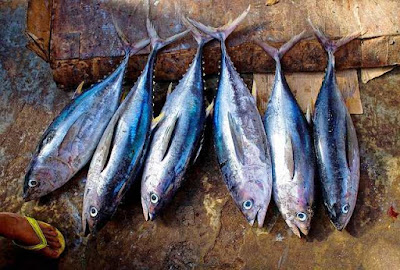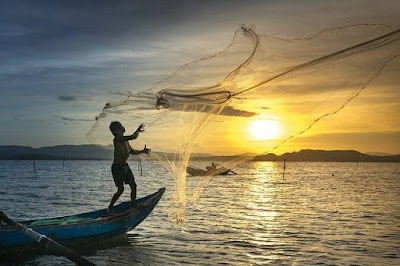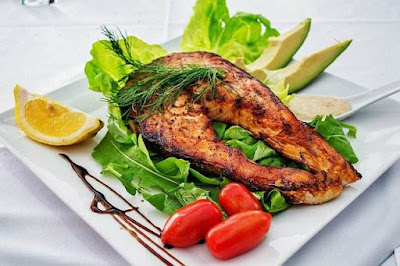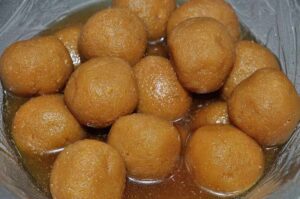Bengalis and their love for fish need no introduction. They live to eat and spend most of their earnings on food. These are not quips but the stark reality of Bengalis. A Bengali meal is incomplete without fish. Bengalis love fish and are often described as a Maache-Bhaate-Bangali that means rice and fish, make a Bengali. But, is there any explanation about why Bengalis love fish so much?
 |
Bengalis, the third-largest ethnic group in the world, resides in Bangladesh and the Indian states of West Bengal, Tripura, and Barak Valley of Assam. Their total population is around 240 million that includes a significant global Bengali diaspora. No matter where they live, Bengalis are sure to have a fish course at least one meal a day.
How Fish Became An Identity Of Bengalis
Bengal, within the Ganges delta region, is crisscrossed by numerous rivers like the Ganges, Padma, Meghna, Damodar, Mayurakshi, Teesta, and Rupnarayan. It is teeming with countless ponds and lakes that offer the populace a wide variety of fish like Rui, Katla, Pabda, Tangra, koi, Hilsa, pomfret, and Bhetki and other sea animals like shrimp, prawn, and crabs.
In the early days, fishing was the principal activity of people who lies near the coast. Bengali literature, sculptures, and paintings of that time suggest that fishing was one of the primary occupations of the people of Bengal.
 |
| Fishing |
The riverine plain produces abundant rice and fish. As a result, fish is almost a secondary staple to be eaten with rice. Every village in Bengal has ponds that are used for pisciculture.
Historically people had settled around rivers due to fertile land and accessibility of food and water. As the increasing population of fishes in any waterbody makes them unusable. So, people started eating fish in excess, and some made it an occupation.
Habits eventually become tradition, and tradition becomes a culture that further governs the behavior of society as a whole. Now, if something becomes a part of your culture and you practice those ever since you were born, it does not die out ever.
Another reason for this obsession with fish is because it was, historically, the primary source of protein in Bengal. Fish is a high protein food and has several health benefits.
The moist climate of Bengal was not suitable for growing Dal, which supplies protein to most Indians. The first Bengali texts of the 11th century, the Charyapadas, describe fishing and hunting and mention many kinds of food products. But, there is no reference to Dal.
Later on, the Vaishnava movement of Chaitanya put dal into the Bengali diet as a substitute for veg protein.
Although the religiously conservative Brahmins are strictly vegetarian, Bengali Brahmins gladly devour fish and meat. They started eating fish due to the popularity of fish in the local diet. The intellectual Bengali Brahmans claim that a thirteenth-century Sanskrit text from Bengal Brihad-dharma Puranas gave special permissions for them to eat fish.
Bengalis – The Finest Food Creator
Bengali fish dishes are cooked with a mind-boggling variety of ingredients and techniques. Bengalis show love and passion for both dried fish called Shutki (more present in Opar Bangla or Bangladeshi households) as well as fresh fish. Prawn or shrimp is also a favorite of the Bengalis of Epar Bangla(West Bengal).
 |
| Fish Fry |
The most revered fish delights of Bengal include Sorshe Ilish, Rui maacher Kalia, chingri maacher malaikari, tel koi, Chitol maacher muitha, bhetki paturi, bhapa ilish maach, pabda maacher jhaal, and Daab Chingri, etcetera.
The cooking style is unique for all the items. For example, for the dish Illish Bhapa, fish is steamed in spices before cooking through to become infused with flavor. For Sorshe Illish, the use of mustard and spices make the dish more delicious. The unique pungent flavor and aroma of Mustard oil make it tastier.
Although the food preparation styles and choice of fish vary in the different parts of Bengal, the main course generally remains the same, with rice and fish playing a dominant role.
Ilish/Hilsa – The Preservation Of The Iconic Fish
Bengalis eat almost every part of the fish. They use the other spare bits of the fish to flavor curries and dals.
Rui (rohu), koi (climbing perch), Tangra, Magur, Pabda (the pink-bellied Indian butterfish), Katla as well as, Shuţki (small dried sea fish) are the most common freshwater fish available in the region.
Chingri(prawn) is a particular favorite of Epar Bangla residents. It comes in many varieties, such as Kucho (tiny shrimp), Bagda (tiger prawns), or Golda (Scampi).
But Ilish(Hilsa), a saltwater fish (not sea fish), remains the icon of Bengali cuisine. The Ilish Maach from the river Podda (Lower Ganges or the Padma) in Bangladesh is considered the best.
Hilsa lives in the sea. It migrates upstream to breed and then goes back to the sea if it can. It is beloved for the rich taste and texture of its flesh. Hilsa’s tender flesh(bony though it may be), combined with an emollient texture and exquisite flavor, lends itself to an infinite variety of culinary preparations.
Hilsa resides in plenty in the estuaries where the rivers meet the sea tide. Hilsa is Bangladesh’s national fish. To protect this supreme fishery, Bangladesh has introduced a ban on catching juvenile or baby hilsa. There is a prohibitory order for the fishermen on the Padma and Meghna rivers in Bangladesh to venture out during the breeding season.
Across the border, the West Bengal government has also set up a Hilsa preservation and research centre. These measures have controlled the earlier declining trend of the fish catch.
Other coastal regions in India also love fish. States like Goa, Telangana, Kerala also consume salty water fish in vast quantities because it is cheap, delicious, and plentiful. Some of the popular fishes eaten are Pomfret, Rohu, Bombay duck(Loitta), Carps, Bekti, Surmai, Indian Salmon(Gurjali fish in Bengali), etc. Assam and Odisha too drool over fish.
Bengalis get singled out for their love for fish because they have carved an identity out of it.
One of the most distinctive features of Bengali fish is that they love fresh sweet water fish, while in other cultures, they love seawater fish.
With a total of 98.55%, the Registrar General of Census has declared that Bengalis are the most non-vegetarian people in India.
Fish – An Integral Part Of Bengali Culture
Fish has become so integral to Bengalis that now their sight is considered lucky. From the Bengali Annaprashna or Mukhe Bhaat, the first rice eating ceremony of a baby, wedding, any auspicious event, fish holds immense significance in a Bengali house.
As the newly wedded Bengali bride takes her first steps in her new household, she is welcomed by showing her an alive fish. The sight of fish marks her auspicious beginning in the new home. The bride and groom’s sides also exchange fish-shaped sweets.
People from both the North and South Indians are appalled that not only do Bengalis consume fish on Puja days, but they also offer it to the deity.
Bengalis think that eating fish increases their intelligence. Bengal has produced famous Bengali personalities in all the fields. Apart from that fish, also increases the beauty quotient as it is good for the skin. In Bengal, fish is not just a food item but a part of their culture. To conclude, fish has become inseparable from the life of Bengalis.




